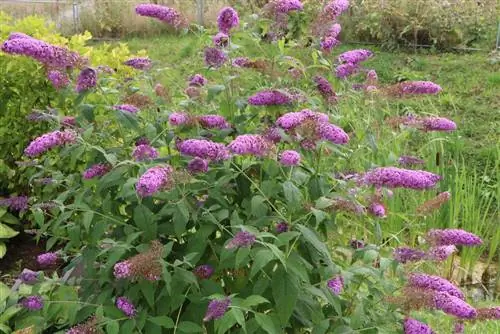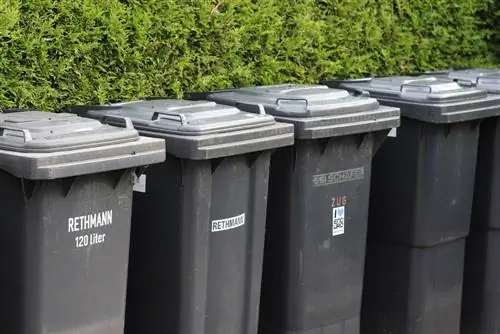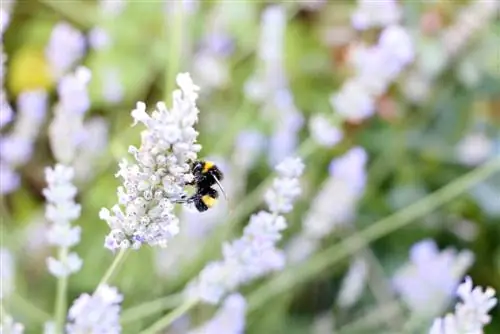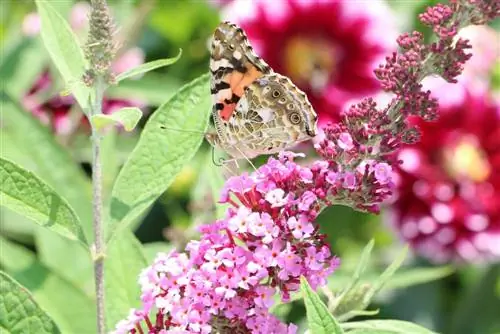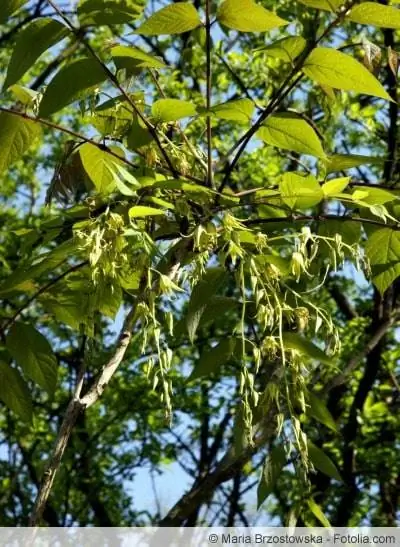- Author admin [email protected].
- Public 2023-12-17 03:39.
- Last modified 2025-01-24 12:45.
The butterfly bush, bot. Buddleja davidii, is also known as buddleia or lilac spear. Botanically speaking, the shrub belongs to the buddleia genus (Buddleja) from the figwort family (Scrophulariaceae). The individual cultivars bloom in the colors white, dark pink and different shades of purple. The butterfly bush is not related to the “German” lilac (Syringa), even if the name and flowers suggest this.
Origin
The shrub originally comes from China and Tibet. Today it is cultivated as an ornamental plant in gardens worldwide in temperate climate zones. It can also be found in the wild as a garden refugee in Europe, North America, Australia and New Zealand. In Germany, the buddleia was first discovered in the wild in 1928 on a gravel bank on the Rhine. Its spread is determined by the winter climate. In the northern hemisphere, its range ends in regions that have more than minus 20 degrees in winter, because the shrub dies at these temperatures.
Location
The butterfly bush is a true sun worshipper and is considered particularly heat-resistant. Therefore, its location should
- sunny
- warm
be. In locations with cold easterly winds, you should look for a sheltered location for the butterfly bush, as it does not tolerate the cold winds well. Some varieties, such as “Blue Chip” or “Reve de Papillon Blue”, tolerate partial shade well.
Tip:
The butterfly bush also copes very well with urban climates.
Substrate
In the wild, the butterfly bush settles on skeletal soils, such as railway tracks or stream and river banks. In the garden it gets along well with normal garden soil, but prefers a soil with the following properties:
- moderately dry
- well drained
- slightly sandy or gravelly and
- moderately nutritious
- pH value: slightly acidic, neutral or alkaline

Some varieties of Buddleja davidii, such as the purple-violet flowering buddleia “African Queen”, tolerate calcareous soils. Moist, nutrient-rich soils do not cause any problems for the shrub, although the wood may not mature as well on these soils, which can affect its winter hardiness. In addition, the wood on these floors is less break-resistant.
Tip:
If the soil is very moist, work building sand into the soil around the root ball, this makes the soil more permeable. Normal compost-based potting soil is suitable for pot cultivation. To ensure that the substrate is well-drained, you should enrich it with sand or fine grit.
Usage
The butterfly bush is a permanent bloomer in summer. It can be planted as a solitary shrub in the meadow or in a group in the garden. Since it is extremely undemanding and robust, it is ideal for the rock garden. Other styles that go well with the butterfly bush include:
- Flower Garden
- Natural Garden
- Cottage Garden
Dwarf summer lilac, i.e. varieties with a maximum height of 60 centimeters, are very suitable for container cultivation on the balcony or terrace. With this attitude, however, the bushes need winter protection so that the cold cannot penetrate through the planter.
Note:
The butterfly bush does not have its name for nothing, as it is an attraction for butterflies, especially the peacock butterfly, as well as bumblebees and bees.
Neighboring plants
In a group, the buddleia works very well as a flower hedge or in summer woody or perennial borders. The distance to the neighboring plants in the group should be at least 100 centimeters, as the butterfly bush can reach a growth width of 120 to 200 centimeters. As a shallow-rooted shrub, the shrub can spread very quickly and crowd out other plants. To avoid this, it is recommended to line the planting pit with a rot-proof root barrier. It goes particularly well in flowering hedges with:
- fingerbush
- Japanese shrub spars
You can achieve a beautiful play of colors when butterfly bushes blooming in different colors are combined in the flower hedge. Place it in the bed or in the border with late-blooming perennials, such as:
- Asters
- Coneflower
- Beardflower
- High Stonecrop

particularly well staged. The shrub looks magical in combination with various ornamental grasses, such as pipe grass or miscanthus.
Varieties for sunny locations
African Queen
- purple violet flower
- medium fragrance
Dart’s Papillon Blue
- light purple flower
- medium fragrance
Empire Blue
- blue-violet blossom
- strong scent
Lochinch
- blue-violet blossom
- medium fragrance
Nanho Purple
- purple flower
- medium fragrance
Peace
- white flower
- faint scent
Peacock
- violet-purple flower
- medium fragrance
Pink Delight
- dark pink flower
- medium fragrance
Summer Lounge
- Flowers in white, pink, purple
- Dwarf buddleia with medium fragrance
White Profusion
- white flower
- medium fragrance
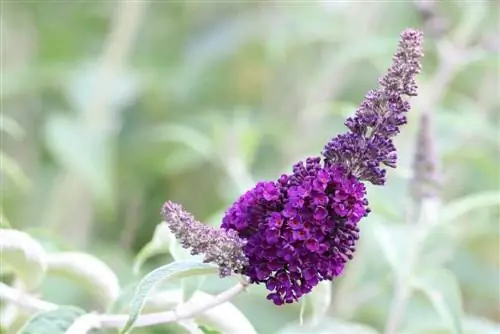
Varieties for partially shaded locations
Black Knight
- dark purple flower
- strong scent
Blue Chip
- blue blossom
- Dwarf buddleia with a faint scent
Buzz Ivory
- white flower
- no scent
Buzz Magenta
- magenta flower
- Dwarf buddleia without scent
Flower Power
- two-tone flower in dark blue and purple with an orange flower center
- medium fragrance
Reve de Papillon Blue
- blue blossom
- medium fragrance

